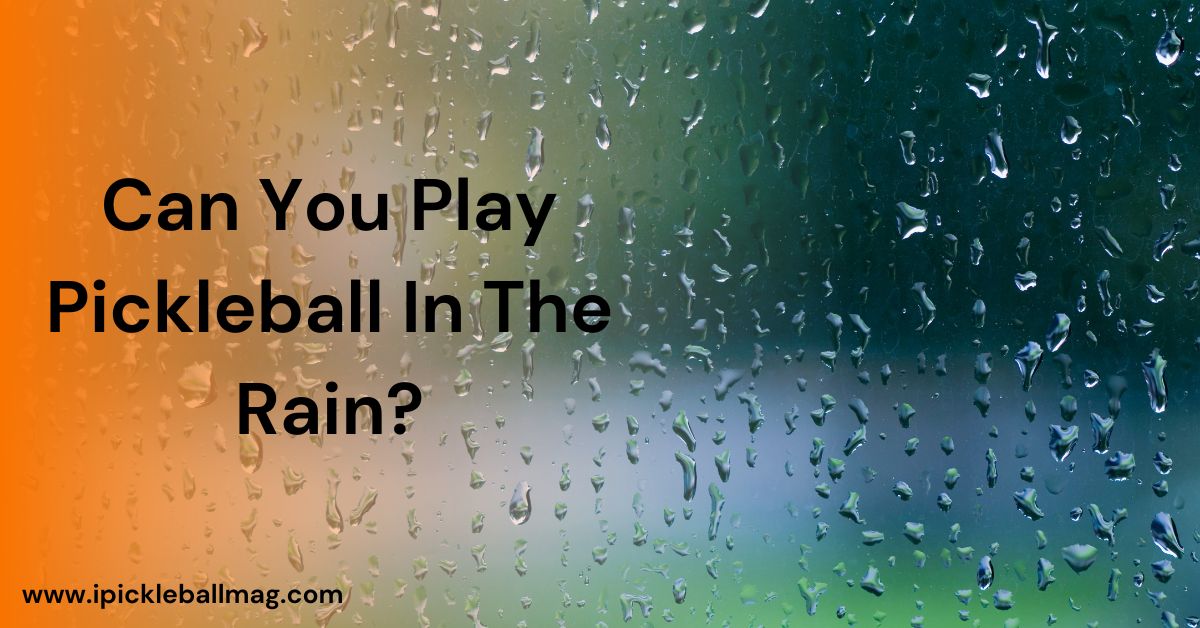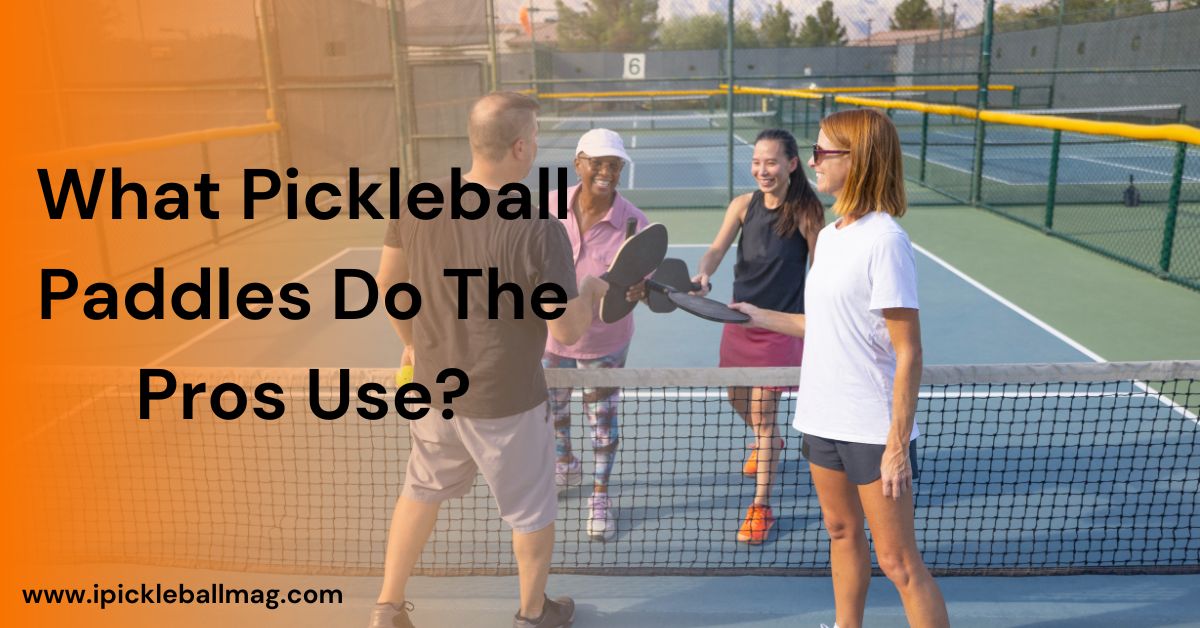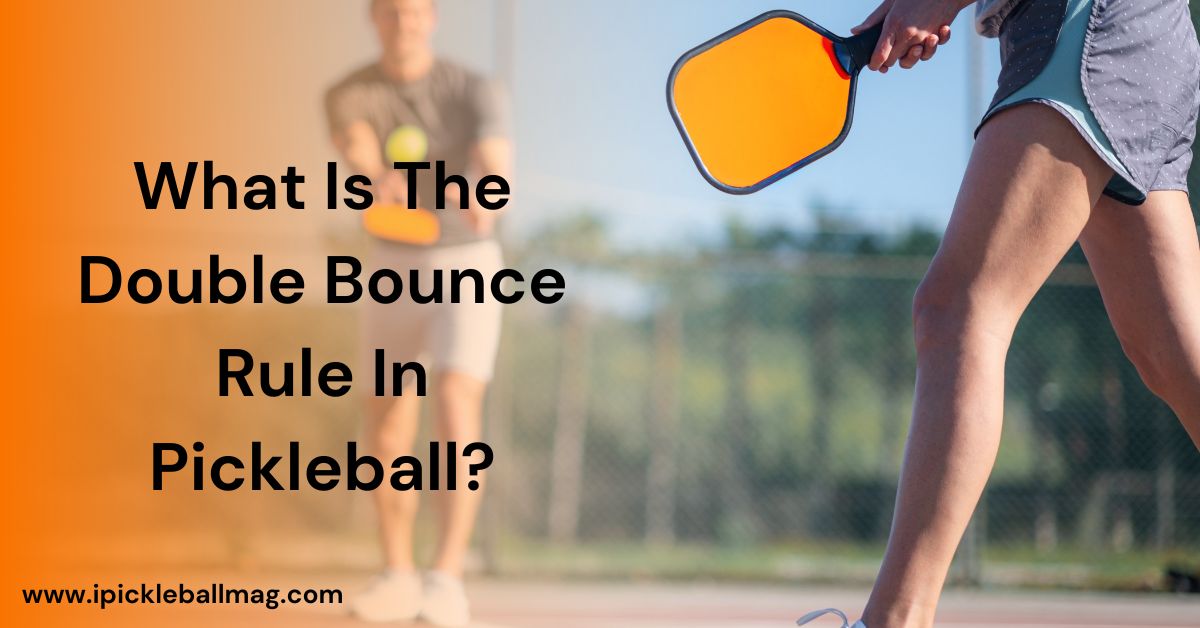Pickleball vs Squash – A Comprehensive Guide
If you are a player who engages in racquet sports, you would have received a question or wondered what the difference is between squash and pickleball.
There are several differences between squash and pickleball, such as
- Pickleball uses shorter and wider paddles, is made of solid materials, and weighs less than 24 inches. Squash rackets are longer and thinner and have strings weighing up to 3.9-5.1 oz (110-145 g). They have a surface area of 77.5 square inches.
- Pickleball balls are larger, made of plastic with holes, and used outdoors. Squash balls are smaller, solid, and used indoors, with colored dots indicating bounce levels.
- Pickleball courts are 20×44 feet, whereas A standard squash court for singles play measures 32 feet (9.75 meters) in length and 21 feet (6.4 meters) in width.
- In scoring, squash uses point-a-rally to 11 points or hand-in-hand-out to 9 points, while pickleball games go to 11 points with a two-point margin, using a unique three-number system for doubles.
Well, that was a Short Introduction to Squash vs Pickleball. We will now move on to the Detailed differences between both sports, their history, and the health benefits of both sports.
Pickleball Vs Squash – Equipment Differences
Certain features are specific to pickleball paddles and squash rackets. Pickleball paddles prioritize control at the net through their compact solid design weighing under 24 inches.
In contrast, squash rackets utilize a thinner, longer head under 255g with tensions of 25-30 pounds to drive power from any court.
Additionally, pickleball balls regulate between 2.874 to 2.972 inches for outdoor play, while squash balls bounce indoors, denoted by colored dots at 40mm for any skill level.
Pickleball Paddles vs Squash Rackets
Squash rackets and Pickleball paddles are different, as you can see by their names. The ball is hit with a paddle in pickleball, while it is hit with a racquet in squash. Both of them are explained in detail below.
Pickleball Paddle
Pickleball paddles are shorter and wider than typical racquets or paddles for other sports. According to regulations, they must have a combined maximum length and width of 24 inches.
Most commonly, pickleball paddles are 15-16 inches long by 7-8 inches wide. This sizing provides adequate power, control, and surface area for striking the pickleball.
The paddles are always solid without strings and made of durable, lightweight materials such as carbon fiber or composites.
Squash Racquets
A squash racket is required to be no more than 27 inches in length and 8.5 inches in width. Its total strung area cannot exceed 77.5 square inches.
The maximum allowable weight for a squash racket is 255 grams, though most weigh between 90 and 150 grams. Strings on the racket are tensioned between 25 to 30 pounds.
While resembling a tennis racket in its construction, a squash racket is longer and thinner, with a smaller sweet spot for contacting the ball.
Squash Balls vs Pickleball Balls – How They Differ?
In Equipment, the balls are also different. Below are detailed descriptions of both types of balls.
Squash Balls
Squash balls measure approximately 40 millimeters in diameter and weigh 25 grams. The squash balls on the court come in different bounce levels, indicated by colored dots.
Balls with a single white dot are best for beginners and children, as they have the most bounce. These are called start squash balls.
A ball with a single yellow dot is designated for intermediate players. Known as a tournament ball, it bounces moderately.
For experienced athletes, a ball labeled with double yellow dots delivers the least bounce. Demanding more precision, these prime squash balls are intended for skilled use.
Pickleball Balls
Pickleball balls must meet size and weight rules. Their diameter should be between 2.87 and 2.97 inches, and their circumference should be 9.03 to 9.34 inches.
Weight should be 0.78 to 0.935 ounces. Heavier balls work better outside due to wind. Balls are made of durable plastic with 26 to 40 holes. These standards create regulation balls for fair play.
Squash vs Pickleball – Scoring System
Squash uses various scoring methods. The most common is point-a-rally (PAR), whereas pickleball uses a simple scoring method.
Both are explained below in detail.
Squash Scoring
Points are scored in squash matches using various methods. The most common system is point-a-rally (PAR), scoring 11 points.
Each rally won is a point, with the first 11 points winning the game as long as a two-point margin is reached if the score is tied at 10-10.
An older method is hand-in-hand-out (HiHo), scoring 9 points. Only the serving player can earn a point by winning a rally, while the returner becoming a server doesn’t change the score if they win. Reaching 9 points wins the game under this format.
Rallies are won by hitting the ball such that the opponent can’t return it before a double bounce, hitting it multiple times in one shot, or hitting shots that land on or outside the lines bounding the court area.
Server faults result in the point and subsequent service being awarded to the receiver.
Pickleball Scoring
The scoring in pickleball uses a system of three numbers. The first number called out is the current score of the serving team.
The second number signifies the score of the receiving team. For doubles games, the third number indicates whether it is the first or second server’s turn. Only two numbers are used in singles play since no second server exists.
All pickleball matches consist of the best two out of three games. Each game is played to 11 points, but you must win by a margin of two points.
This means the game cannot end at 10-10, and someone must reach 12-10 or higher to claim the game.
Pickleball Court and Squash Court – How Are They Different?
Both pickleball and squash have a different court in which the game is played. Squash is always played on indoor grounds, whereas pickleball can be played outdoors and indoors.
Pickleball Court
The pickleball playing area is 20 feet wide by 44 feet long. These boundaries make up the same space as a doubles badminton field. A divider that splits the back section into left and right sides is running down the center.
Near the front is a zone 7 feet from the net called the kitchen. You cannot volley the ball before it bounces in this part.
The net in the middle reaches different heights at different spots. In the center, it is 34 inches tall but raises slightly to 36 inches at the sidelines.
You may notice lines outlining the space. The baseline at the rear edge marks where rallies end. Anything bouncing beyond is out.
Up front, the non-volley line separates the kitchen from the serving area.
Squash Court
The playing area is rectangular and surrounded by four vertical surfaces. Two tall, narrow surfaces run parallel along the sides.
A broad surface stands at the back. At the front is a shorter metallic surface called the tin that rises to your knees.
Various lines divide the playing area. A front line separates the front from the back. A half line cuts the back in half widthwise.
Within the back sections are smaller marked zones for serving.
To Check the official rules for Squash and Pickleball, check out their Official website:
Number of People That Can Play Squash And Pickleball
You can play both pickleball and squash with two or four people. This allows for either doubles or singles matches.
When playing pickleball or squash, the number of players depends on your preferences and how many people are available. With two players, it will be a one-on-one competition for singles. Four people mean teaming up in pairs for doubles action.
Health Benefits Of Pickleball And Squash
Both sports have plenty of health benefits:
Benefits of Playing Pickleball
Let’s explore the Health benefits of playing Pickleball
Low-Impact Exercise
Pickleball provides a low-impact workout suitable for all ages and fitness levels. It is gentle on the joints, making it a popular choice for older adults and those looking to stay active without straining their bodies.
Social Engagement
Pickleball is a social sport that encourages interaction, helping to reduce feelings of isolation and loneliness. It provides an opportunity to make new friends and maintain social connections, which are crucial for mental well-being.
Mental Health Benefits
Pickleball can boost mental health by reducing stress, improving mood, and enhancing overall life satisfaction. Regular play has been linked to lower levels of depression and greater happiness, especially among older adults.
Benefits Of Playing Squash
Let’s explore squash benefits.
Cardiovascular Health
Playing squash provides a high-intensity cardiovascular workout. The game involves constant movement, including running, jumping, and lunging, which helps improve heart health and endurance. Regular play can lower the risk of heart disease and enhance overall cardiovascular fitness.
Strength and Fitness
Squash engages multiple muscle groups, leading to improved muscle tone and strength. The sport requires powerful leg and arm movements, contributing to overall physical fitness. It also enhances stamina and energy levels.
Weight Management
Squash is an effective way to burn calories and manage weight. A typical game can burn around 500 calories per hour, making it a great activity for those looking to lose or maintain weight. The combination of aerobic and anaerobic exercise helps boost metabolism.
Tips for Squash Players Transitioning to Pickleball
Pickleball is growing massively in the United States, and many new players are transitioning from Pickleball to Squash. For those who are transitioning, here are some tips to remember :
Adjust Your Grip and Paddle
Pickleball paddles are different from squash rackets. Get used to the paddle’s solid, stringless surface and adjust your grip accordingly. Practice holding the paddle with a relaxed yet firm grip, similar to how you would hold a squash racket but with more emphasis on control.
Adapt Your Swing
Squash involves powerful, sweeping swings. In pickleball, you will need to focus on shorter, controlled swings, especially when playing near the net. This will help with precision and control over the ball.
Learn the Court Layout
Pickleball courts are smaller and have a unique “kitchen” area near the net where volleying is not allowed. You must also become familiar with some new rules in Pickleball, like the Double Bounce rule and the non-volley zone.
Frequently Asked Questions
Frequently Asked Questions by players are:
What Is Squash Sport Called In America?
Squash is referred to as hardball in America.
Is Pickleball A Hard Sport?
The sport of pickleball is easy to learn and can be played by anyone regardless of their background. This sport keeps you fit and doesn’t affect your joints.
Every age player can learn and play this sport since it is easy to learn.
Final Thoughts
In summary, while pickleball and squash involve paddles/rackets and a ball played on a court, they differ greatly in their history, equipment, scoring, and play venue.
Their growing popularity worldwide shows how people remain drawn to competitive yet social games.
I hope this guide has answered your questions about Pickleball vs Squash.
Thanks For reading along. Have a nice Day!!






